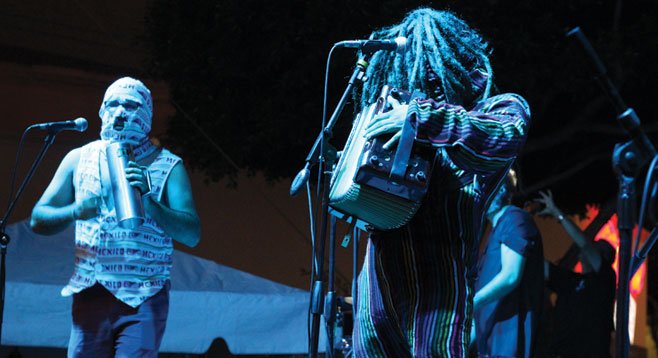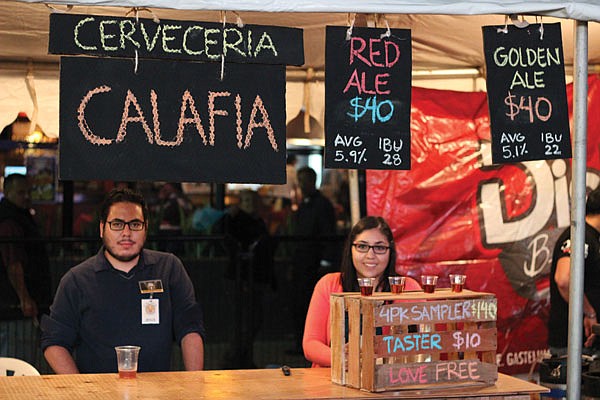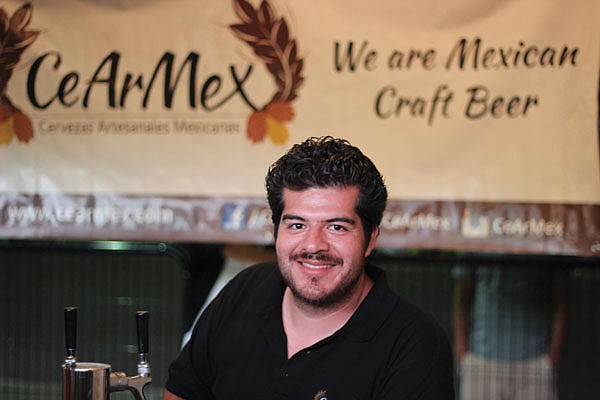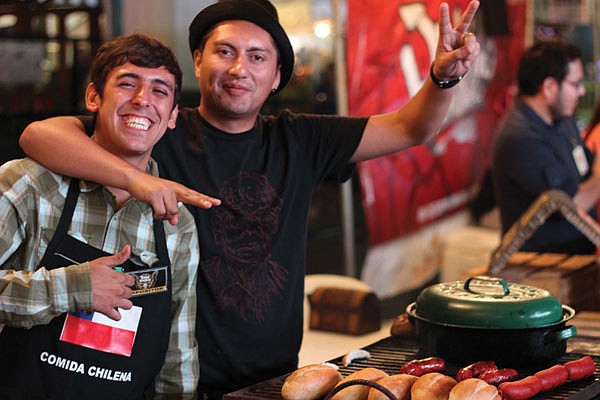 Facebook
Facebook
 X
X
 Instagram
Instagram
 TikTok
TikTok
 Youtube
Youtube

If the idea of craft beer in Baja is new to you, you aren’t alone. But now, more than ever, it’s time to catch up. As any southbound San Diegan knows, the selection of suds in Tijuana and beyond has historically been limited to a less-than-dazzling assortment of what amounts to Mexican Coors and Budweisers, thanks to a duopoly dominated by foreign conglomerates Grupo Modelo and Cerveceria Cuauhtémoc Moctezuma, owned by Anheuser-Busch InBev (Belgium) and Heineken (Holland), respectively.
But all that is about to change.
Last month, the Asociación de Cerveza Artesanal de Baja California hosted the Baja Beer Fest on Avenida Revolución, highlighting over 40 microbreweries in a two-day jubilee that touted a taste of the teas that will soon be available in south-of-the-border stores, bars, and even — with any luck — on tap in San Diego’s favorite hop holes.




The Great Baja Crap Beer Tapout of 2013 is all thanks to a recent ruling by the Federal Commission for Fair Competition (CFC) that has opened the swinging saloon doors to craft beer after decades of calculated pricing structures designed to repress anything but lousy — albeit refreshing — Mexican beer.
“Alcohol permits can be prohibitively expensive and are owned by the duopoly breweries, then leased to the bar and liquor-store owners in order to protect their territory,” says Fred Sanchez of Cervezas Artesanales Mexicanas (CeArMex), a Chula Vista–based organization that, among other things, is helping Baja breweries negotiate the bureaucratic jitterbug required to import their craft suds to your neighborhood pub.
“The macros have contractual stipulations that specify that no other brands can be sold on their premises.”
Another difficulty that craft brewers face, Sanchez notes, is that inordinately high taxes in Mexico require microbrewers to jack up the cost of their wares by as much as 44 percent.
“It is an uphill battle, but the craft brewers are fighting bravely and continue to grow and produce phenomenal beer year after year. Things might seem bleak, but things are starting to slowly turn around.”
A huge milestone for Baja brewers was reached on July 11, when the CFC decreed that the macros were to reduce their exclusivity contracts to 20 percent of total establishments over the next five years, leaving room for micros to market their craft.
“Municipal governments in Baja have taken it upon themselves to facilitate permits to the brewers and brewpubs in counties like Mexicali in order to fight the stronghold that the two macros have,” Sanchez adds.
But what does all this mean for you and your neighborhood pub?
Mexicali-based Cucapá and Ensenada’s Old Mission brews are already available in the states, and Sanchez says that plans are in the works to bring more Mexican micros to bars such as Hamilton’s in South Park and Press Box Sports Lounge in Rancho San Diego. However, a number of obstacles still stand between San Diego bars and Baja brewers.
“There is a lot of interest in the Baja breweries, but some of the most popular ones have a very small production when compared to some of the U.S. up-and-comers...the investment capital isn’t there yet. Another big factor is the high tariffs that they have to pay in order to import the basic materials to produce beer.”
Because of this, Baja has already become Mexico’s de facto craft-beer barrel; yeast, hops, and barley can be picked up from San Diego suppliers and then driven south without being subjected to crippling import fees. But this is just the beginning.
“The tide is slowly turning in Mexico,” says Sanchez, “thanks to the passion and quality of products that the craft brewers have.”


If the idea of craft beer in Baja is new to you, you aren’t alone. But now, more than ever, it’s time to catch up. As any southbound San Diegan knows, the selection of suds in Tijuana and beyond has historically been limited to a less-than-dazzling assortment of what amounts to Mexican Coors and Budweisers, thanks to a duopoly dominated by foreign conglomerates Grupo Modelo and Cerveceria Cuauhtémoc Moctezuma, owned by Anheuser-Busch InBev (Belgium) and Heineken (Holland), respectively.
But all that is about to change.
Last month, the Asociación de Cerveza Artesanal de Baja California hosted the Baja Beer Fest on Avenida Revolución, highlighting over 40 microbreweries in a two-day jubilee that touted a taste of the teas that will soon be available in south-of-the-border stores, bars, and even — with any luck — on tap in San Diego’s favorite hop holes.




The Great Baja Crap Beer Tapout of 2013 is all thanks to a recent ruling by the Federal Commission for Fair Competition (CFC) that has opened the swinging saloon doors to craft beer after decades of calculated pricing structures designed to repress anything but lousy — albeit refreshing — Mexican beer.
“Alcohol permits can be prohibitively expensive and are owned by the duopoly breweries, then leased to the bar and liquor-store owners in order to protect their territory,” says Fred Sanchez of Cervezas Artesanales Mexicanas (CeArMex), a Chula Vista–based organization that, among other things, is helping Baja breweries negotiate the bureaucratic jitterbug required to import their craft suds to your neighborhood pub.
“The macros have contractual stipulations that specify that no other brands can be sold on their premises.”
Another difficulty that craft brewers face, Sanchez notes, is that inordinately high taxes in Mexico require microbrewers to jack up the cost of their wares by as much as 44 percent.
“It is an uphill battle, but the craft brewers are fighting bravely and continue to grow and produce phenomenal beer year after year. Things might seem bleak, but things are starting to slowly turn around.”
A huge milestone for Baja brewers was reached on July 11, when the CFC decreed that the macros were to reduce their exclusivity contracts to 20 percent of total establishments over the next five years, leaving room for micros to market their craft.
“Municipal governments in Baja have taken it upon themselves to facilitate permits to the brewers and brewpubs in counties like Mexicali in order to fight the stronghold that the two macros have,” Sanchez adds.
But what does all this mean for you and your neighborhood pub?
Mexicali-based Cucapá and Ensenada’s Old Mission brews are already available in the states, and Sanchez says that plans are in the works to bring more Mexican micros to bars such as Hamilton’s in South Park and Press Box Sports Lounge in Rancho San Diego. However, a number of obstacles still stand between San Diego bars and Baja brewers.
“There is a lot of interest in the Baja breweries, but some of the most popular ones have a very small production when compared to some of the U.S. up-and-comers...the investment capital isn’t there yet. Another big factor is the high tariffs that they have to pay in order to import the basic materials to produce beer.”
Because of this, Baja has already become Mexico’s de facto craft-beer barrel; yeast, hops, and barley can be picked up from San Diego suppliers and then driven south without being subjected to crippling import fees. But this is just the beginning.
“The tide is slowly turning in Mexico,” says Sanchez, “thanks to the passion and quality of products that the craft brewers have.”
Comments